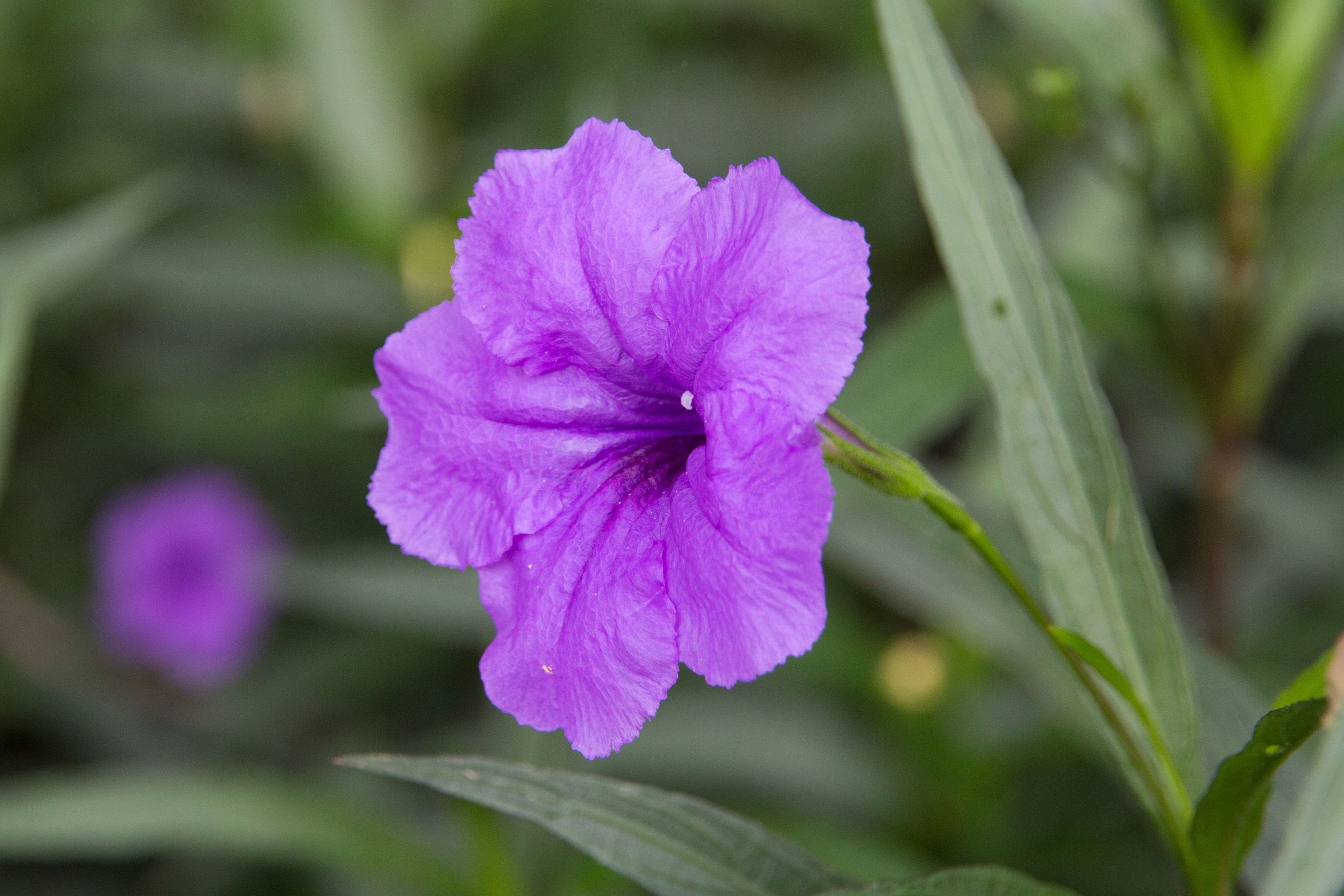Carolina wild petunia
(Ruellia caroliniensis)

Description
Ruellia caroliniensis, commonly known as Carolina Wild Petunia, is a herbaceous perennial plant that belongs to the family Acanthaceae. This native plant is commonly found in the southeastern region of the United States, including parts of Alabama, Georgia, Florida, and North and South Carolina. It is a popular garden plant because of its attractive flowers, and it also provides important ecological benefits as a source of food for pollinators. Taxonomy and Botanical Description: The scientific name of Carolina Wild Petunia is Ruellia caroliniensis, and it is a member of the genus Ruellia. This genus comprises approximately 250 species, most of which are native to the Americas. The genus name, Ruellia, was given in honor of Jean Ruel, a French physician and botanist who lived in the 16th century. Carolina Wild Petunia is a perennial plant that can reach a height of 2-3 feet (60-90 cm) and a spread of 1-2 feet (30-60 cm). It has a clumping growth habit and forms a dense mound of foliage. The leaves are simple, ovate or lanceolate in shape, and measure up to 4 inches (10 cm) in length. They are arranged oppositely along the stem and have a slightly hairy texture. The flowers of Carolina Wild Petunia are tubular in shape and measure approximately 2 inches (5 cm) in length. They are produced in terminal clusters of 3-7 blooms that arise from the leaf axils. The flowers are typically lavender to violet-blue in color, but they can also be pink or white. They have five petals that are fused into a tube, and the corolla is usually slightly curved. The stamens are inserted at the base of the corolla and are exserted beyond the petals. Ecology and Distribution: Carolina Wild Petunia is a common plant in the southeastern United States, where it is found in a variety of habitats, including pine forests, savannas, and wetlands. It is often found growing in disturbed areas such as roadsides, fields, and abandoned lots. The plant is hardy in USDA zones 6-10 and prefers well-drained soils that are rich in organic matter. Carolina Wild Petunia is an important plant for pollinators, including bees and butterflies, which are attracted to its nectar-rich flowers. It is also a larval host plant for the Common Buckeye butterfly (Junonia coenia) and the White Peacock butterfly (Anartia jatrophae). Uses and Cultivation: Carolina Wild Petunia is a popular plant for ornamental gardening, both for its attractive flowers and its ease of cultivation. It can be grown in a wide range of soils and light conditions, although it prefers full sun to partial shade. It is also drought-tolerant once established and can be grown as a groundcover or in borders, rock gardens, or containers. The plant can be propagated by seed or division. Seeds can be sown in the spring, either indoors or directly in the garden, and should be kept moist until germination. Division is best done in the fall or early spring, and the resulting plants should be spaced 12-18 inches (30-45 cm) apart. Carolina Wild Petunia is not known to have any significant medicinal or culinary uses. However, some Native American tribes reportedly used the plant as a treatment for eye infections and other ailments. Conclusion: Carolina Wild Petunia is a beautiful and useful plant that is well-suited for ornamental gardening and ecological restoration. Its attractive flowers and easy-to-grow nature make it a popular choice for gardeners.
Taxonomic tree:







